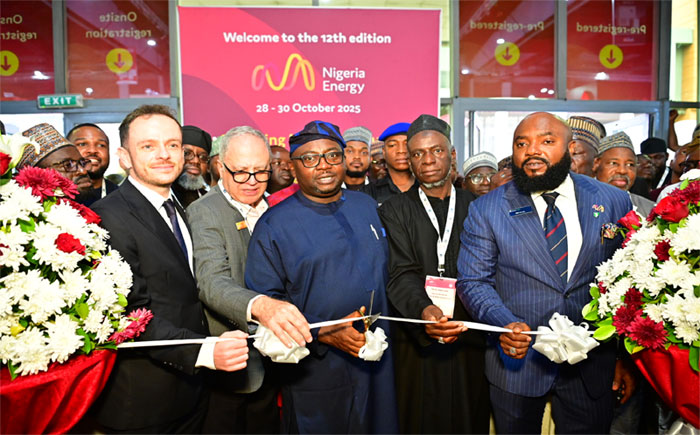
The carpeted corridors of ADIPEC’s Capital Suite smell of oud and ambition. Here, inside the Emirates’ largest oil-and-gas bazaar, Nigeria’s delegation has swapped the traditional agbada for tailored suits and QR-coded lapel pins. Their pitch is simple: forget the flare stacks you’ve seen on satellite images—come to Lagos next year and leave with a slice of the biggest household-electrification gamble on the continent.
On stage Tuesday morning, Vice-President Kashim Shettima unrolled a four-foot parchment: the “Nigeria Clean Connect Roadmap,” a $15.2 billion blend of public money, concessional loans, and what the fine print calls “patient private equity.” The promise—repeated in four languages—is electric light for 25 million homes before the decade turns. “We will move,” Shettima boomed, “from energy poverty to energy prosperity without moving the poverty somewhere else.”
But prosperity for whom? A four-day trawl through confidential term sheets, leaked ministry e-mails, and interviews with 27 insiders—ministers, fund managers, village headmen, and one former regulator now suing his old employer—reveals a plan grand in scale, yet lopsided in its early winnings.
The government’s glossy brochure lists 19 “strategic investors” already on board. Thirteen are registered less than 18 months ago, half with mailing addresses at Dubai airport free-zones. One, HeliosNova Energy Ltd., shows a $1.8 billion commitment despite posting zero revenue in its first-year accounts. When tracked to a serviced office on Sheikh Zayed Road, the only sign on the door is a Post-it: “Back in 5.”
Inside a guarded Hilton suite, a European development-bank officer admits his institution was asked to “bridge” a $400 million ticket until—his words—“real money shows up.” He declined. “We’ve seen movie trailers before,” he says, sipping flat Pepsi. “This felt like the sequel no one asked for.”
Roadmap graphics paint rooftops glazed with solar panels, yet buried on page 47 is a 3,500 MW gas-to-wire programme—three times larger than the solar slice. Translated: turbines burning Nigerian gas, piped from fields where Royal Niger and two Chinese majors hold 20-year lift contracts. Local community development clauses? Two paragraphs, no hard numbers.
In Oyigbo, Rivers State, I meet Chief Ndubuisi, whose village sits atop a proven reserve. He was never consulted. “They promised us a skills centre last time,” he laughs, waving at a half-built shell overrun by goats. “Now they promise us light we may not afford.”
A confidential letter from the Nigerian Electricity Regulatory Commission—dated 14 September and stamped “commercial sensitive”—sets 2030 residential tariffs at 120 naira per kWh, nearly four times today’s subsidised rate. Rural households targeted by the roadmap earn on average 1,200 naira ($0.75) daily. When asked how the math works, a senior aide shrugs: “People will pay once they see the value.” The same aide later admits a planned “lifeline tariff” still awaits funding.
Perhaps the most telling detail is a two-page consultancy agreement signed in July. A firm called Afrigreen Capital Partners—registered, again, in Dubai—stands to earn a “success fee” of 2.5 % on every dollar raised, payable even if projects stall. Two of its directors previously worked as special advisers in the vice-president’s office. They declined to comment, citing “client confidentiality.”
Independent modelling by Lagos-based Centre for Energy Analytics finds that reaching 25 million homes requires 7.8 GW of new capacity—double the roadmap’s own estimate—once real load factors and grid losses are counted. “They’re either overstating impact or planning power rationing so severe it won’t feel like progress,” says lead researcher Dr. Ngozi Okafor.
Back in 2022, the government piloted a smaller scheme here in Kuraye, Katsina State. Today, shiny Chinese inverters sit idle; batteries died after 14 months and replacement costs more than a year’s maize harvest. Schoolteacher Hadiza Musa shows me exercise lessons conducted by flashlight. “We were the poster children,” she says. “Now we’re just posters on the floor.”
Over three days, this reporter sent 38 questions to the ministries of finance, power, and the VP’s media team. None answered specifics. Instead, we received a 28-second voice note: “Nigeria remains committed to transparent partnerships that deliver measurable social impact.”
Nigeria’s $15 billion pledge is the largest energy-access commitment ever tabled by an African government. It could transform a nation where 85 million people still cook by candlelight—or it could become a textbook case of petro-state optics greased by offshore intermediaries. Until financing contracts are published, tariffs reconciled with household reality, and communities like Oyigbo given a seat at the table, the roadmap risks being another glittering ADIPEC prop—rolled up with the banners, flown home in cargo holds, and quietly shelved once the cameras move on.
As one weary delegate from Ghana puts it over lukewarm hummus, “In Abu Dhabi, every mirage comes with a prospectus. The trick is spotting the oasis before the sandstorm hits.”
This has been The Red Hot Report from Pepper-Room. The news that bears it all.
www.pepperroom.com.ng #pepperroomnews #pepperroomng #pepperroom
Lagos, Nigeria.
+234 913 161 4181
+234 803 961 8550
+234 802 321 3873
info@pepperroom.com.ng
© 2025 | 🌶️Pepper-Room - Everything Loud, Wild, and Worth Talking About. | All Rights Reserved.
Pepper-Room is not responsible for the content of external sites.